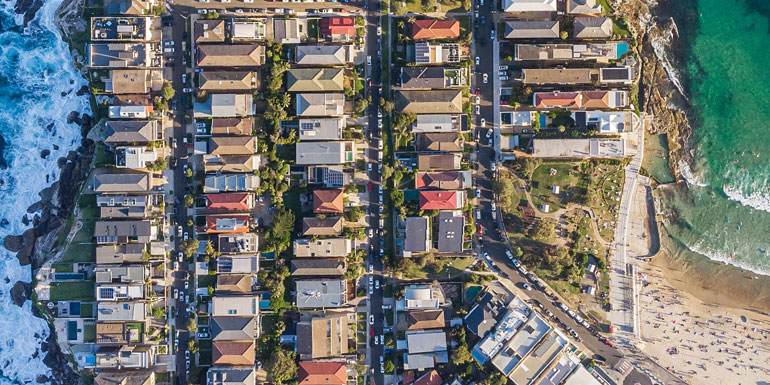The NSW Government has a range of resources and programs to help NSW local governments plan and deliver their response to climate change, to ensure a sustainable and prosperous future.
This page supports the development of a consistent, statewide approach for local governments to achieve low-carbon/net zero emissions and climate-resilient communities. It includes resources to help prepare for climate change, transition to net zero emissions, and reduce risk exposure.
LG Climate Action User Guide
The NSW Government's local government climate action user guide provides councils with an introduction to climate action, followed by a detailed 4 step guide to climate action in their organisation and Local Government Area (LGA). Councils can use this guide to systematically plan, deliver and monitor their climate actions.
Climate readiness tool
Your council’s capacity for climate action depends on the skills and resources that are available, as well as opportunities, limitations and barriers that may affect your actions. You can assess your capacity for reducing emissions and adapting to climate risks using the NSW Government’s local government climate readiness tool (formally known as the Health Check tool).
The tool is a diagnostic and benchmarking tool. It is an Excel spreadsheet with questions that step through self-assessment for managing climate risk and reducing emissions. Once the self-assessment is completed, a graph of progress against each stage is generated, allowing councils to monitor and compare progress through each integrated planning and reporting cycle.
Your climate readiness journey
Whether you are just starting out on your pathway or have already implemented actions, you can start planning your next steps using a 4 -step plan to reduce emissions and adapt to climate change.
Understanding your local and wider contexts and how they relate to your local area is the first step in action on climate change. Your council’s context is made up of:
- the climate change impacts, risks, and causes that are unique to your LGA
- your council’s ability to reduce emissions and adapt, including resourcing, opportunities, limitations, influences, values, and policies, strategies, and climate actions already underway
- wider NSW Government policies and legislations, such as NSW Net Zero Plan Stage 1: 2020–2030.
Once you know your context, you can look at climate and emissions data for your area to identify priorities and opportunities for reducing emissions and adapting to climate risks. Data can be collected from your local council, industries, businesses, and communities.
Reviewing future climate projections will help identify the key climate risks your LGA is likely to face, such as sea level rise, coastal erosion, increased flood risks, heatwaves and urban heat. Once you know the risks, you can plan actions to adapt.
Combine your local context, priorities, and opportunities into a plan to reduce emissions and manage and adapt to climate risks. Your plan will allocate your resources and capabilities (identified in step 1) to the opportunities and priorities to reduce emissions and adapt (identified in step 2).
The Climate risk ready NSW guide provides practical guidance to help you assess and manage climate change risks. The Net zero guidance for NSW councils contains guidance and useful resources to help you develop a net zero emissions strategy for your LGA.
Regularly monitor and evaluate your progress towards net zero emissions and climate change adaptation. This will help you adjust your actions if progress isn’t on track, or if your context changes.
Resources
Below are some tools and templates to support you on your climate change journey.
- The climate readiness tool helps local governments assess their existing climate risk management capacity.
- Climate change policy template, highlighting key sections to include in a policy and providing guidance.
- Local government climate data template spreadsheet to record sources of climate data and undertake a gap analysis of data sources across Council/agency functions.
- Monitoring and evaluation template for climate change adaptation projects and strategy.
- Climate change officer position description template guidance on essential and desirable capabilities that councils or agencies may require when recruiting for a climate risk officer or similar role.
- Climate change committee ToR template terms of reference for a Climate Change Risk and Adaptation Management Committee.
- Policy clause for corporate risk management brief policy clause for inclusion in council policy documents.
For further information on using these resources or to provide feedback and suggestions for other templates, please email AdaptNSW.
